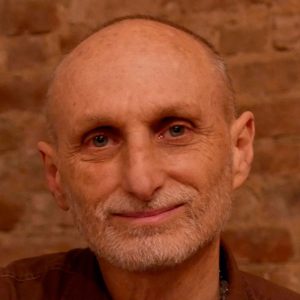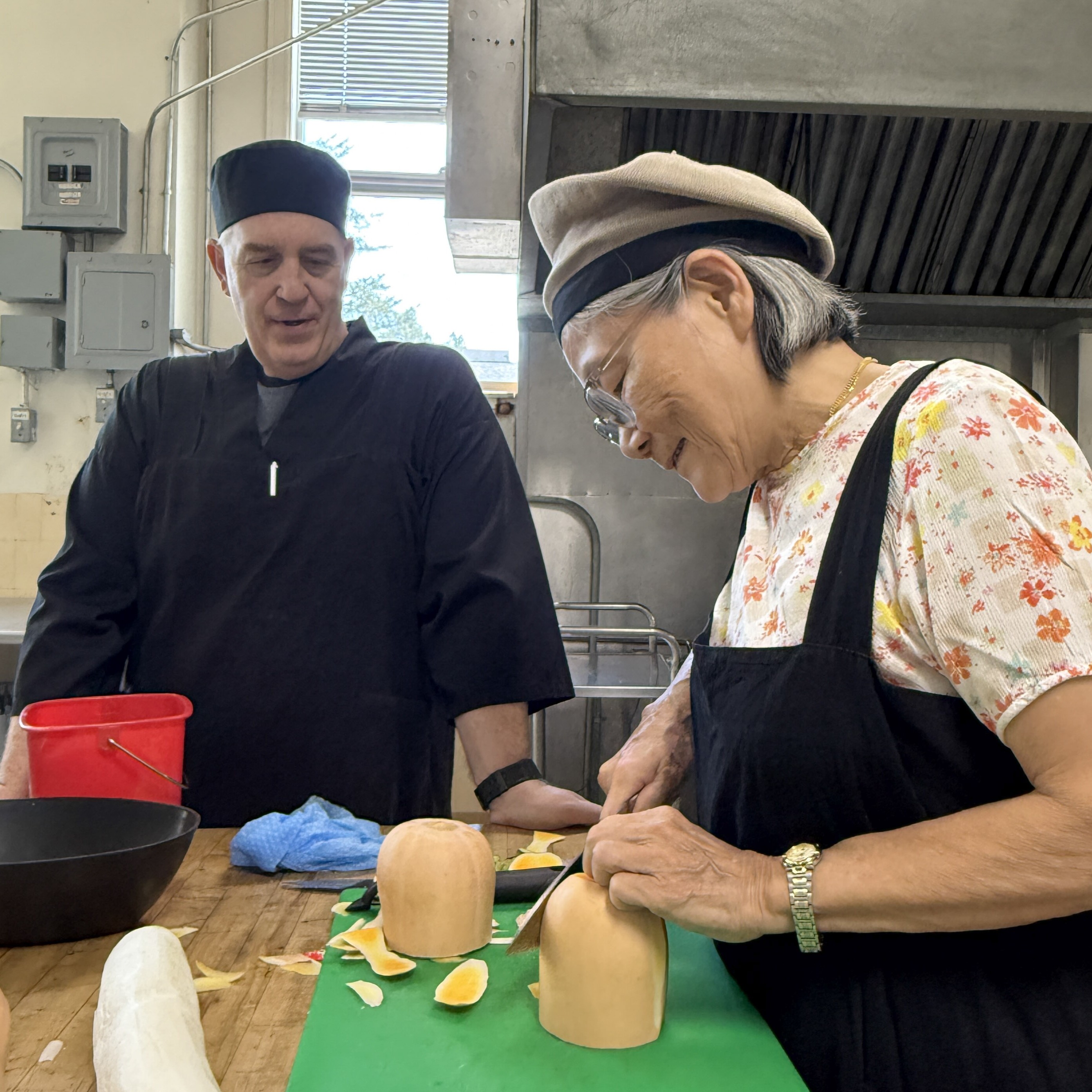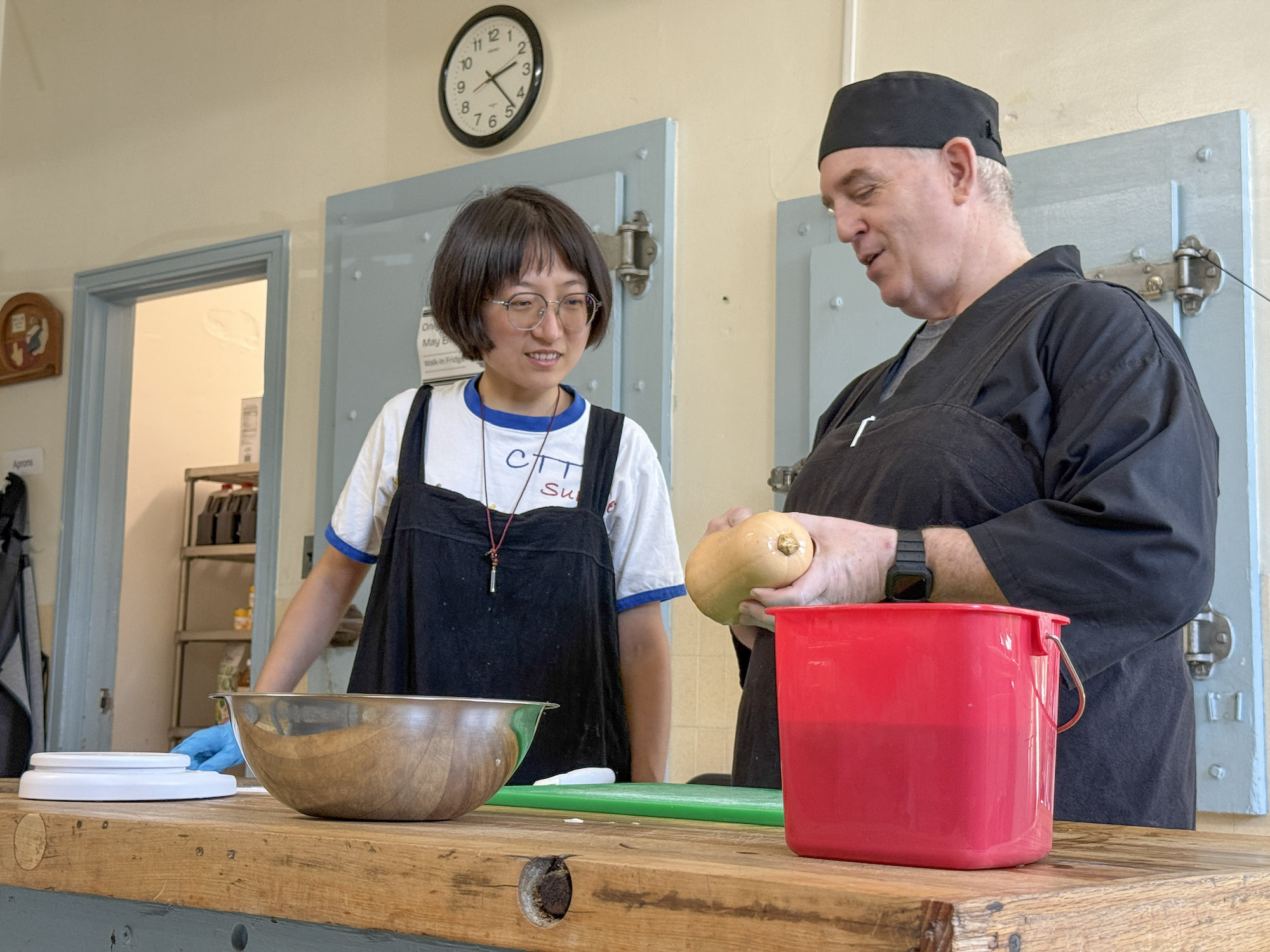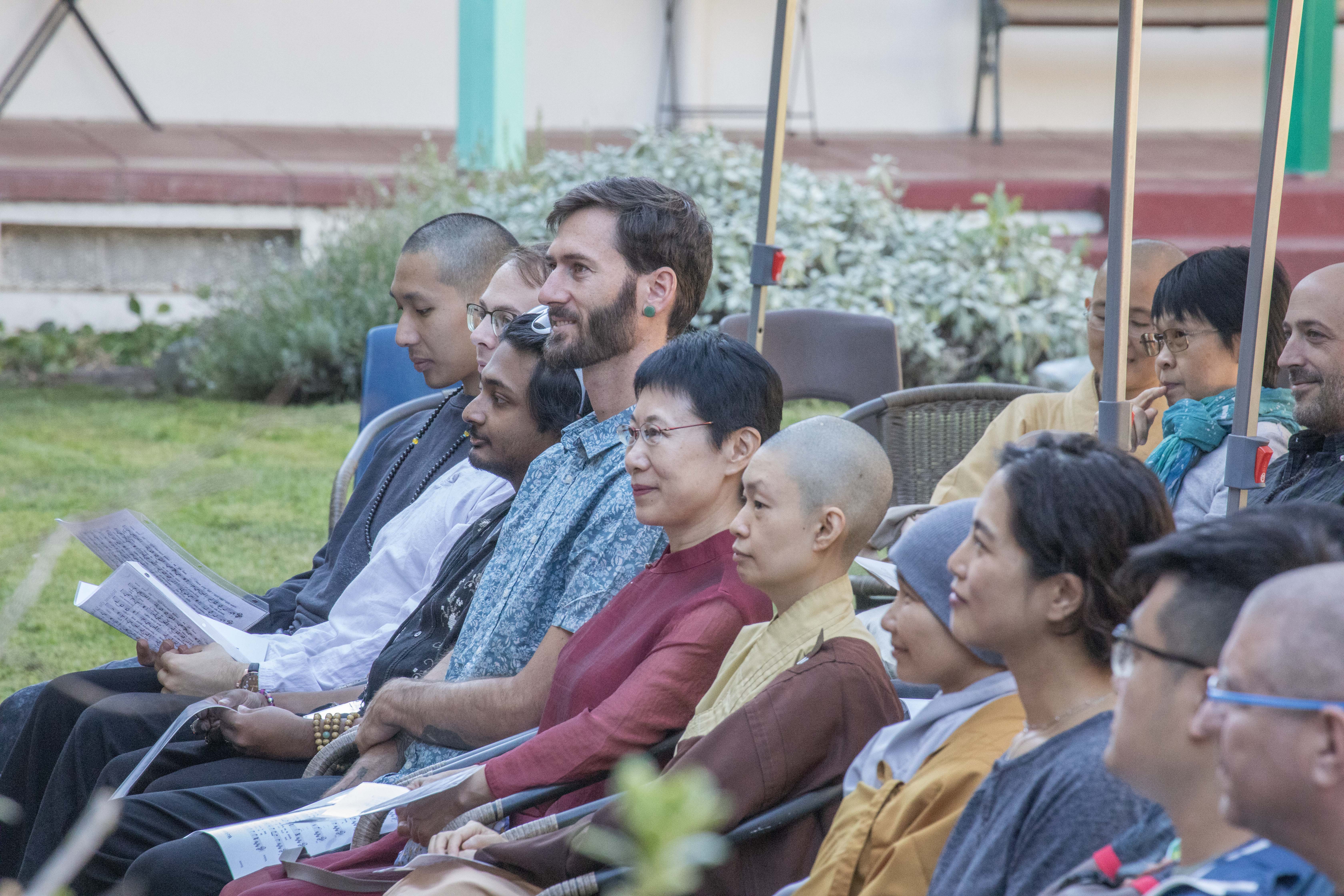
It was there, in an English monastery called Chithurst, that I encountered a newsletter from the City of Ten Thousand Buddhas. In a copy of Vajra Bodhi Sea, I read the words of Master Hua. For some reason, whatever the Master said, there’s something in me that deeply trusted him. He spoke of Guan Yin, and said there is no disease that Guan Yin can’t deal with. “If you sincerely worship and call on Avalokiteshvara Bodhisattva, Guan Yin, and you learn the Great Compassion Mantra, there will be a response. There’s nothing Guan Yin can’t handle.” So I talked to my teacher and said this was what I wanted to do. He and all the monks remembered me when I was well and so energetic. My teacher wanted me to get better, so he blessed my efforts. I learned the Great Compassion Mantra, but I didn’t know how to pronounce it. There were these words on the page in a language I didn’t understand, but I just learned it. I was chanting it 108 times a day. Although I was still really sick, lying down most of the time, I got myself to learn it, at least some version of it. I did it. Also I saw that the Master said you have to be patient. You know, don’t just chant it one time and expect spectacular results. You must practice in this way for at least three years. So I said to myself, “Okay, I’m going to do it.” And then there was a response.
In 1983 Master Hua sent his monks on a delegation to Europe. One day Dharma Masters Heng Sure, Heng Chao (Dr. Martin Verhoeven), and a couple of other monks showed up at our monastery in the UK. Having faithfully chanted the Great Compassion Mantra every day for a few years, I experienced their arrival as a wonderful response to my prayers. I received permission from my abbot Ajahn Sumedho to talk with the visiting monks about my practice of chanting the Great Compassion Mantra. Ajahn Sumedho wanted me to get better from my debilitating illness. So I went to Reverend Heng Sure and told him I’d learned the mantra on my own and would like to learn how to do it properly. Immediately he responded, “Well, let’s hear it!” And so I recited it, coming out with a version where you can even see him fighting back a smile. After I finished, he said something judicious like, “Well, that was energetic!” or something like that. But then they taught me how to pronounce it and let the mantra flow with one count per syllable. At that time the nuns in our monastery also really wanted to learn it, so I made a tape so that they could learn it too.
I just wanted to get better from my illness. That was it. And desire is almost demonized in our tradition. In a way it’s the big baddie, for desire is the cause of suffering. Of course, the Buddha discerns the truth of things, and old age, sickness, and death are the way it is in this conditioned realm. But encountering the Guan Yin dharmas opened up a new way of thinking, where one is not shamed for wanting things, and just automatically says no, no to all desires! Guan Yin says, “I’ll help you with your auspicious wishes.” And because I wanted to give back, I knew that wanting to get well wasn’t a bad wish. Holding Guan Yin’s name and holding the mantra in this way was a real shift in my practice. At the same time, it was still so important to continue learning how to die, seeing that what arises ceases, practicing letting go, deeply contemplating the teaching from the sickness, after having led a life of being so willful and perpetually trying to get somewhere else. It’s so important to learn how to recognize when you’re not wanting, those moments of letting go that reveal the peaceful essence of the heart that gets covered over when we’re so busy getting somewhere or getting away from something unpleasant. There is a wonderful teaching that we regularly contemplated in our Theravada training: to be patient, whatever the situation, and to learn to discover what is truly peaceful at the core.
But still, because this Dharma is so precious, there was something coming up in my heart, a deep wish to be able to help and give back. The Guan Yin Dharmas gave me a form where I could use that wish for getting better, and put that energy into a devotional practice. I didn’t realize at the time how Guan Yin casts her net out to draw one closer, making affinities with living beings to help them feel better; but she’s really guiding us into the essence of her nature, which is returning the hearing, returning the listening, listening deeply into the heart. What’s so wonderful about the devotional practice to Guan Yin is that her name is just the one who listens. Holding her name as one unifies with Guan Yin, it keeps guiding one back to one’s own listening heart, to Guan Yin — returning to the center.
By then, those causes and conditions were already in motion. My teacher Ajahn Sumedho was invited to the City of Ten Thousand Buddhas back in 1989 for an ordination ceremony. Knowing how dedicated I was to Master Hua, Ajahn Sumedho invited me to accompany him on that trip, even though I was doing a year-long silent retreat at the time. That occasion was the first time I had the chance to meet Master Hua in person. And soon after that, Master Hua came to visit our monastery in the UK. My faith in the Master and the Guan Yin Dharmas was deepened significantly.
In 1991, when Rev. Heng Sure and a delegation were visiting our monastery in the UK, he offered to transmit the Forty-Two Hands and Eyes to me and another monk in our Theravada tradition. Master Hua insisted, however, that we couldn’t proceed with the ceremony until we got permission from our teacher Ajahn Sumedho. Ajahn Sumedho gave his permission. Before, the ceremonial transmission Master Hua said to us on the phone, with Dharma Master Heng Sure translating:
You should bring the two traditions together into a single piece. The Northern and Southern traditions must unite, and then Buddhism has a future.
This is your mission. Do not assume that the Great Vehicle is superior to the Theravada or vice versa. Have no limits. The Teaching has no limits. Let your mind be limitless.
— Master Hua 7/21/1991
Dharma has been at the center of my life since 1976. For the last thirty years or so, I’ve been committed to exploring how the two traditions are mutually supportive in a beautiful way.
I love the classical Theravada teachings; I love the Guan Yin Dharmas and the bodhisattva vows. The heart of the Theravada practices is this notion that you’re not finding peace out somewhere else. It is always here and now. And there is this deep practice of turning the mind to the deathless. Ajahn Chah said true peace is not somewhere else; it’s right here within the mind. But this practice combined with the Great Compassion mantra, the Shurangama mantra, the holding of the name, and the Bodhisattva vows is truly wonderful. I find the embodied mindful practices of the Theravada and the vows and mantras of the Mahayana work together powerfully and beautifully.
For years, I practiced bringing the traditions together a lot on my own. I learned the Shurangama mantra in 1989 after meeting the Master, when he said the Shurangama mantra was vitally important to protect the Dharma. Hearing that was enough for me. I learned it, and I’ve promised to recite it every day since then. As to the Great Compassion mantra, I resolved to recite it a minimum of five times in the morning and five times in the evening — every day since around 1980. Sometimes I recite a lot more. But over these decades, I realized that holding these mantras is so important, so helpful.
And then in 1996 or so, my wife Thanissara encouraged me to start sharing these Dharmas and the weaving of the two traditions together in the countless retreats we’ve taught over the years in Africa and other centers that we’ve established or are visiting. Now, even though I’m 70 and maybe should be retiring, I have the chance to be in a place that was founded around these precious principles, an opportunity to be with others who are practicing these wonderful teachings. I feel deeply guided by Master Hua, Ajahn Chah, and the Buddha. And so thank you for giving me this opportunity to share. And if there are any points that anybody wants to discuss, or questions, I’m really happy to do the best I can to respond.
During the Q&A Session with Kittisaro Weinberg at Kalyāṇa Tea in Sudhana Center-DRBU, in-depth inquiries from the audience and insightful responses from Kittisaro were recorded.


